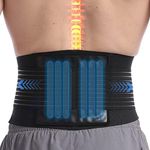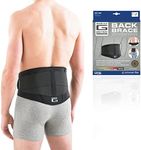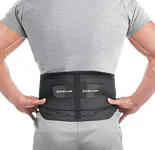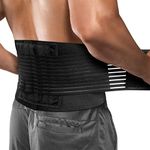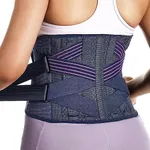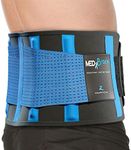Buying Guide for the Best Lower Back Support Belts
Lower back support belts are designed to provide support and stability to the lower back, helping to alleviate pain and prevent injury. When choosing a lower back support belt, it's important to consider several key specifications to ensure you select the best fit for your needs. Understanding these specifications will help you make an informed decision and find a belt that offers the right level of support and comfort for your specific situation.MaterialThe material of the lower back support belt is crucial as it affects comfort, breathability, and durability. Common materials include neoprene, elastic, and mesh. Neoprene is durable and provides good support but can be less breathable. Elastic materials offer flexibility and comfort but may wear out faster. Mesh materials are breathable and lightweight, making them ideal for extended wear. Choose a material based on your comfort preferences and how long you plan to wear the belt each day.
AdjustabilityAdjustability refers to how easily you can modify the fit of the belt to suit your body shape and size. Belts with multiple adjustment points, such as Velcro straps or lacing systems, allow for a more customized fit. This is important for ensuring the belt provides adequate support without being too tight or too loose. If you need a belt for varying activities or different levels of support, look for one with high adjustability.
Support LevelThe support level of a lower back support belt can range from light to firm. Light support belts are suitable for minor aches and preventative use, while medium support belts are good for moderate pain and daily activities. Firm support belts are designed for severe pain or post-injury recovery and provide the highest level of stability. Consider the severity of your back issues and the type of activities you will be doing when choosing the support level.
Size and FitSize and fit are critical for the effectiveness of a lower back support belt. A belt that is too small may be uncomfortable and restrict movement, while one that is too large may not provide adequate support. Most belts come with sizing charts based on waist measurements. Measure your waist accurately and refer to the manufacturer's sizing guide to find the right fit. Some belts also come in unisex sizes, while others are specifically designed for men or women.
BreathabilityBreathability is important for comfort, especially if you plan to wear the belt for extended periods or during physical activities. Breathable materials, such as mesh or perforated fabrics, allow air to circulate and help prevent sweating and skin irritation. If you live in a hot climate or need the belt for exercise, prioritize breathability to ensure you stay comfortable.
Ease of UseEase of use refers to how simple it is to put on and take off the lower back support belt. Belts with simple Velcro closures or quick-release buckles are generally easier to use. This is particularly important if you have limited mobility or need to adjust the belt frequently throughout the day. Consider your daily routine and how often you will need to put on or remove the belt when evaluating ease of use.

